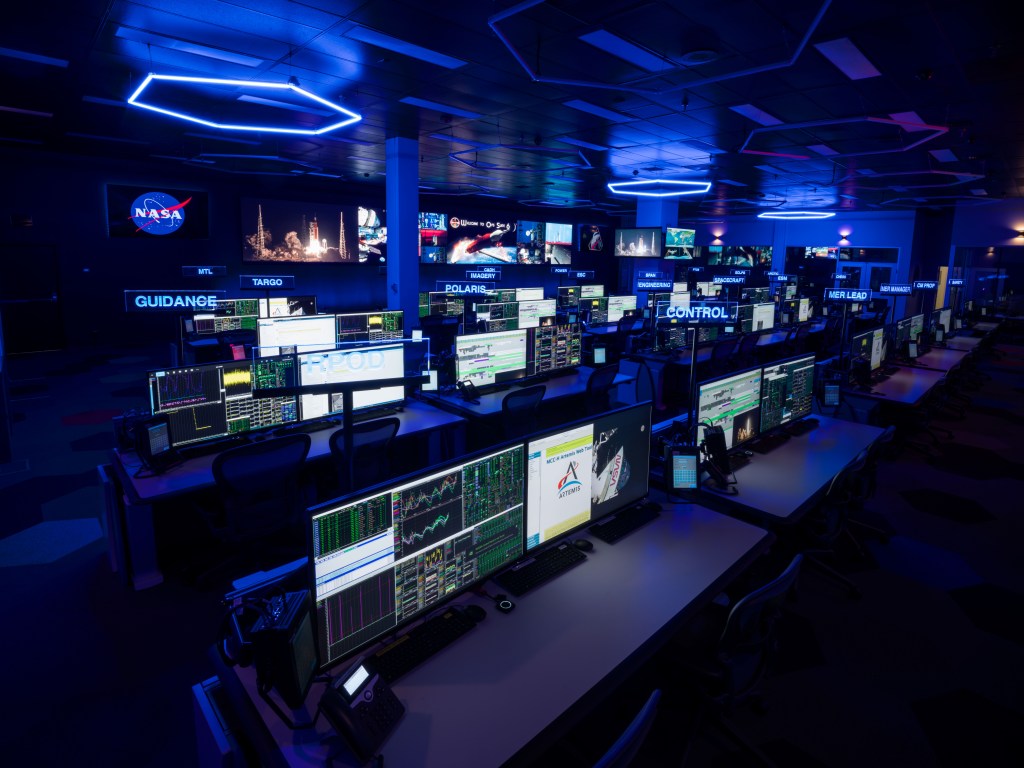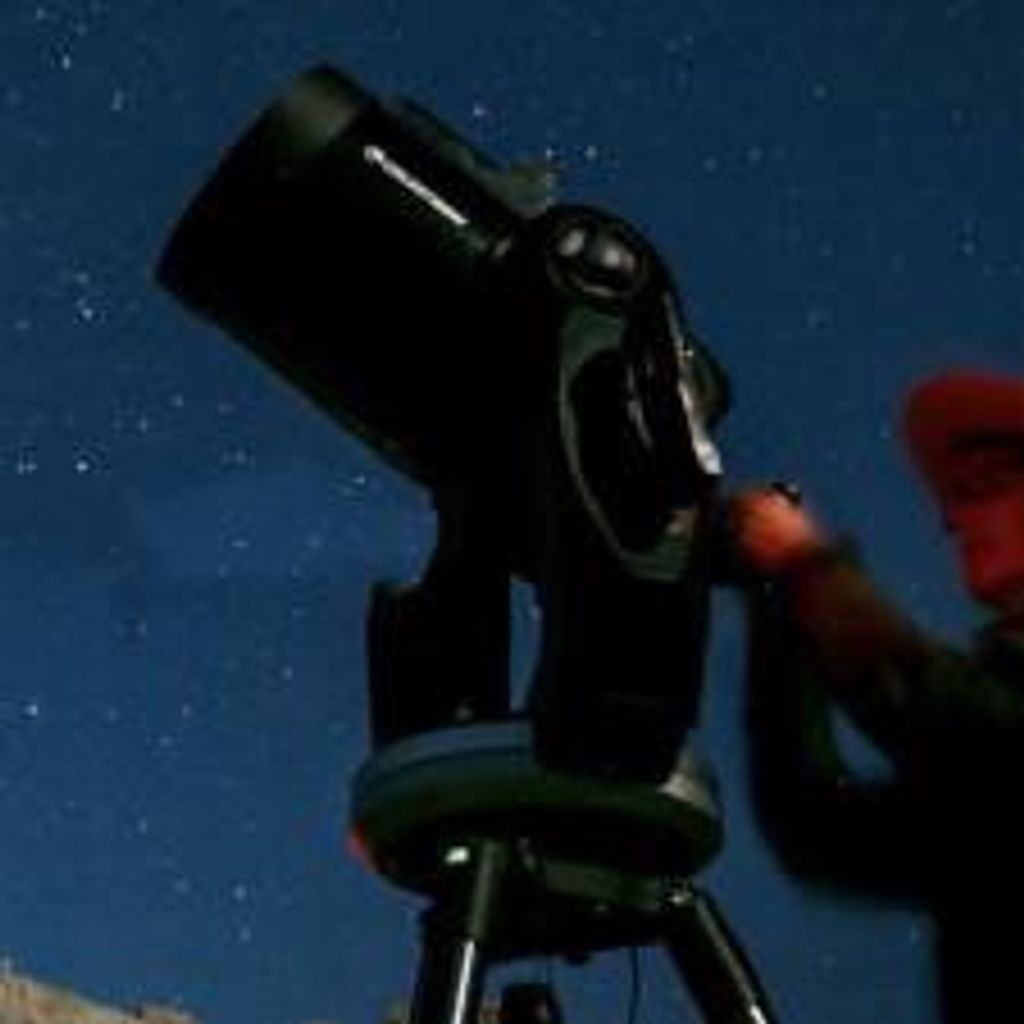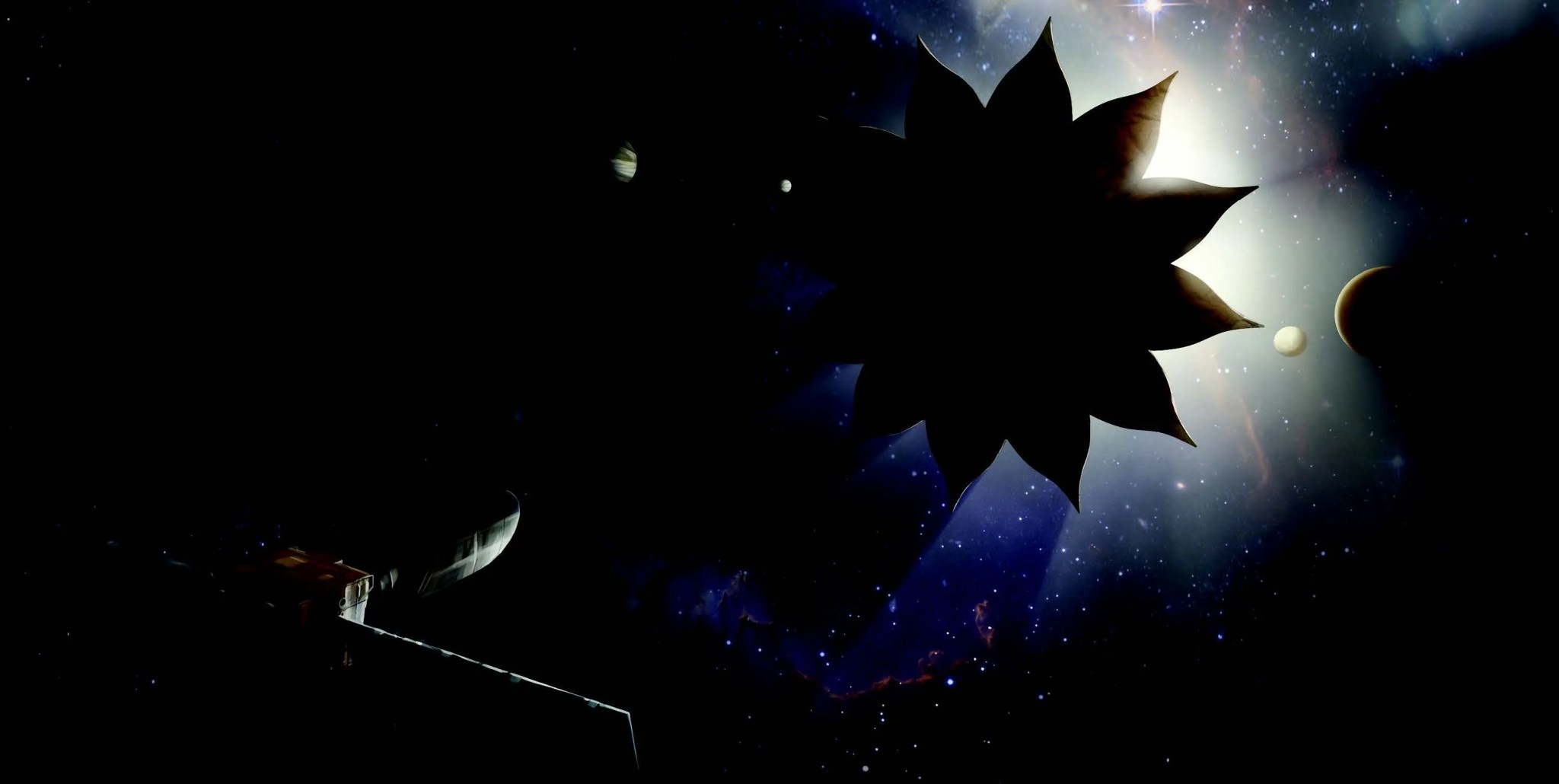Technology Development
Acquiring images and spectra from planets around our neighboring stars could give us a sense of their atmospheres and habitability—but only if we can block out the star’s light. The light reflected off an Earth-sized planet around a Sun-like star is about 10 billion times dimmer than the light from the parent star itself. Along with coronagraphs, a starshade is a type of occulter technology that is being developed by NASA to suppress starlight, enabling direct imaging and spectra observations to help probe for evidence of atmospheric gases, some of which may be related to life. This method requires a sufficient contrast (the ratio of the light from the planet compared to the star) of 10-10, a level that cannot be reached by conventional ground-based telescopes or even current space-based telescopes operating without a starshade or a coronagraph. Unlike the coronagraph, the starshade operates outside of the telescope, on a separate space platform about 20,000 – 40,000 kilometers away, blocking the starlight before it can even enter the telescope, and allowing the faint light from exoplanets inside the habitable zone to be observed without interference.
In March of 2016, NASA’s Astrophysics Division created a starshade technology development activity (now named “Starshade to TRL 5” or S5), a directed effort to mature five different starshade technologies to TRL 5 by 2022. Starshades must demonstrate three capabilities to close critical technology gaps before a starshade mission is ready to begin: starlight suppression, formation flying, and precise large deployable structures. In the starlight suppression gap there are two technologies under development: (1) validating diffraction models and error budgets through sub-scale ground tests, and (2) designing, fabricating, and testing razor-sharp optical edges that will prevent scattered sunlight from overwhelming the exoplanet light. In the formation flying gap, the lateral offset position of the starshade relative to the telescope must be determined and controlled within tens of centimeters, such that its deep shadow continuously falls on the telescope. In the precise large deployable structures gap, a 26-meter starshade must first be manufactured and deployed to within millimeters of its desired shape, and second, maintain that shape through all space environments including non-uniform heating from sunlight. Ideally, all five of these technologies should be mature enough (TRL 5) to signal readiness for infusion into a new flight project. The Wide Field Infrared Survey Telescope (WFIRST) is being made “starshade compatible” and could allow habitable exoplanet imaging using a starshade within the next decade, provided the next National Research Council Decadal Survey recommends it.

In 2017 the S5 activity focused on advancing the highest risk technology elements and completing the detailed planning to reach TRL 5 by 2022. For the starlight suppression technology, four different diffraction models from JPL, Princeton, Northrop Grumman, and the University of Colorado were shown to agree on predicted contrast within 5%. Ground-based measurements at Princeton have shown good agreement with models,reaching ≤1x10-8 contrast, with expectations of reaching the ultimate desired performance in 2018. Measurements of scattered light from starshade edge coupons using etched amorphous metal have also shown good agreement with models and meet minimum requirements. A breakthrough in the lateral sensing of the starshade position using out-of-band light that is diffracted around the starshade has allowed the sensors expected to be used on the WFIRST coronagraph to meet requirements for formation-flying control. For the large deployable structures technologies, in 2017 S5 began a critical technical trade study comparing wrapped and folded petal architectures from JPL and Northrop Grumman. The outcome of the trade is expected in the spring of 2018 and will determine the best path forward for developing the starshade deployment and stability technologies.
Impact
The starshade and the coronagraph are the two occulter technologies NASA intends to advance to enable the first image of an Earth-like planet. Both approaches have merit and are being developed with a focus on demonstrating one or both as part of the WFIRST mission, currently scheduled to launch in the mid-2020s. The starshade would provide a higher throughput of light from the exoplanet without requiring advanced wavefront sensing technology and control optics, which enables shorter observations, but a starshade takes some extra time to move between targets compared to the onboard coronagraph. For future large space-based observatory concepts, like the Habitable Exoplanet Imaging Mission (HabEx), even larger starshades would enable deep-dive measurements of planetary spectra, atmospheric characterization, and habitability assessment by potentially working together with a coronagraph. A starshade could also be launched separately for rendezvous at a later date with any starshade-compatible telescope.
Future Plans
In the spring of 2018, S5 will submit a detailed technology development plan for all five critical starshade technologies. Pending approval from NASA, S5’s goal is to reach TRL 5 on three of its five technologies—starlight suppression, edge scattering, and lateral sensing—before the upcoming Astrophysics Decadal Survey is complete. In parallel, the technologies related to deployment and shape stability will be prioritized in the ongoing trade study with sub-scale starshades planned for deployment and testing in relevant environments by 2022.
Sponsoring Organization
Starshade technology development was previously funded by NASA’s Astrophysics Division via the competitive SAT program and is currently directly funded by the Exoplanet Exploration Program. Dr. John Ziemer at NASA JPL leads the starshade effort with support from Northrop Grumman Aerospace Systems. Prof. Sara Seager from MIT and Prof. Jeremy Kasdin from Princeton University are the Principal Investigators for the starshade rendezvous mission concept study.


































